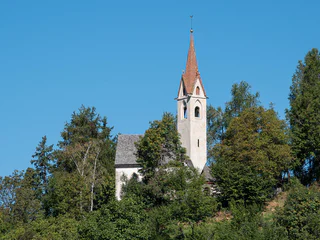
1/7
St. John-Church in Cornale
Bressanone dintorni/Brixen Umland, Brixen/Bressanone, Brixen/Bressanone and environs
Het zuiden van Zuid-Tirol biedt een overvloed aan culturele hoogtepunten en bezienswaardigheden. Ontdek historische gebouwen, charmante pleinen en fascinerende musea die je een inkijk geven in de geschiedenis en cultuur van de regio. Laat je inspireren door de culturele diversiteit en beleef onvergetelijke momenten.

1/7
Bressanone dintorni/Brixen Umland, Brixen/Bressanone, Brixen/Bressanone and environs

Gfrill/Cauria, Salorno/Salurn, Alto Adige Wine Road

La Costa/Seit, Laives/Leifers, Bolzano/Bozen and environs

1/3
Laces/Latsch, Latsch/Laces, Vinschgau/Val Venosta

1/3
Mitterolang/Valdaora di Mezzo, Olang/Valdaora, Dolomites Region Kronplatz/Plan de Corones

Tesido/Taisten, Welsberg-Taisten/Monguelfo-Tesido

1/2
Bressanone città/Brixen Stadt, Brixen/Bressanone, Brixen/Bressanone and environs

1/2
Terento/Terenten, Terenten/Terento, Brixen/Bressanone and environs

1/4
Cadipietra/Steinhaus, Ahrntal/Valle Aurina, Ahrntal/Valle Aurina

1/7
Monguelfo/Welsberg, Welsberg-Taisten/Monguelfo-Tesido

1/8
Lasa/Laas, Laas/Lasa, Vinschgau/Val Venosta

Pochi/Buchholz, Salorno/Salurn, Alto Adige Wine Road

1/4
Terento/Terenten, Terenten/Terento, Brixen/Bressanone and environs

Fleres/Pflersch, Brenner/Brennero, Sterzing/Vipiteno and environs

1/3
Anterselva di Mezzo/Antholz-Mittertal, Rasen-Antholz/Rasun Anterselva, Dolomites Region Kronplatz/Plan de Corones

1/7
Collepietra/Steinegg, Karneid/Cornedo all'Isarco, Dolomites Region Eggental

Mazzon/Mazon, Neumarkt/Egna, Alto Adige Wine Road

1/3
Velloi/Vellau, Algund/Lagundo, Meran/Merano and environs

Merano/Meran, Meran/Merano, Meran/Merano and environs

1/2
Ganda/Gand - Appiano/Eppan, Eppan an der Weinstaße/Appiano sulla Strada del Vino, Alto Adige Wine Road

1/2
Campo Tures/Sand in Taufers, Sand in Taufers/Campo Tures, Ahrntal/Valle Aurina

Salorno/Salurn, Alto Adige Wine Road

Auna di Sotto/Unterinn, Ritten/Renon, Bolzano/Bozen and environs

1/6
S.Cristina Gherdëina/S.Cristina Val Gardena/S.Cristina Gherdëina/St.Christina in Gröden, S.Crestina Gherdëina/Santa Cristina Val Gardana, Dolomites Region Val Gardena

1/3
Merano/Meran, Meran/Merano, Meran/Merano and environs

1/7
Ora/Auer, Auer/Ora, Alto Adige Wine Road

Salorno/Salurn, Alto Adige Wine Road

Pavicolo/Pawigl, Lana, Meran/Merano and environs

1/11
Aldino/Aldein, Aldein/Aldino

1/2
Piavenna/Plawenn, Graun im Vinschgau/Curon Venosta, Vinschgau/Val Venosta